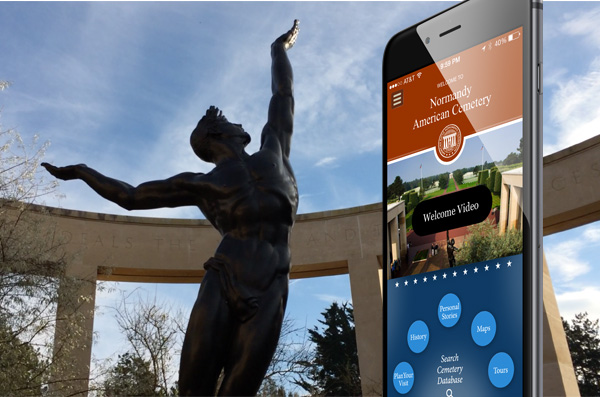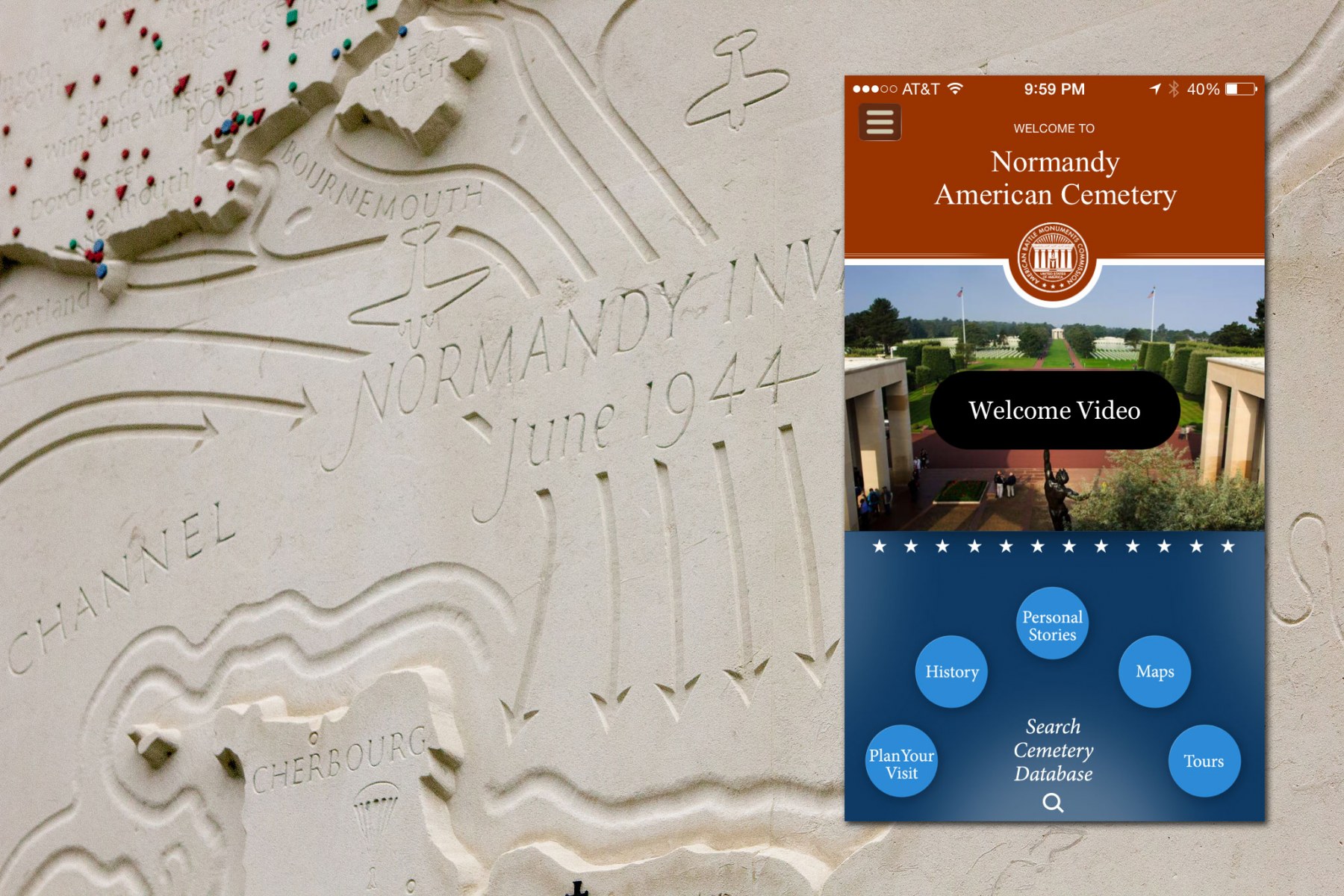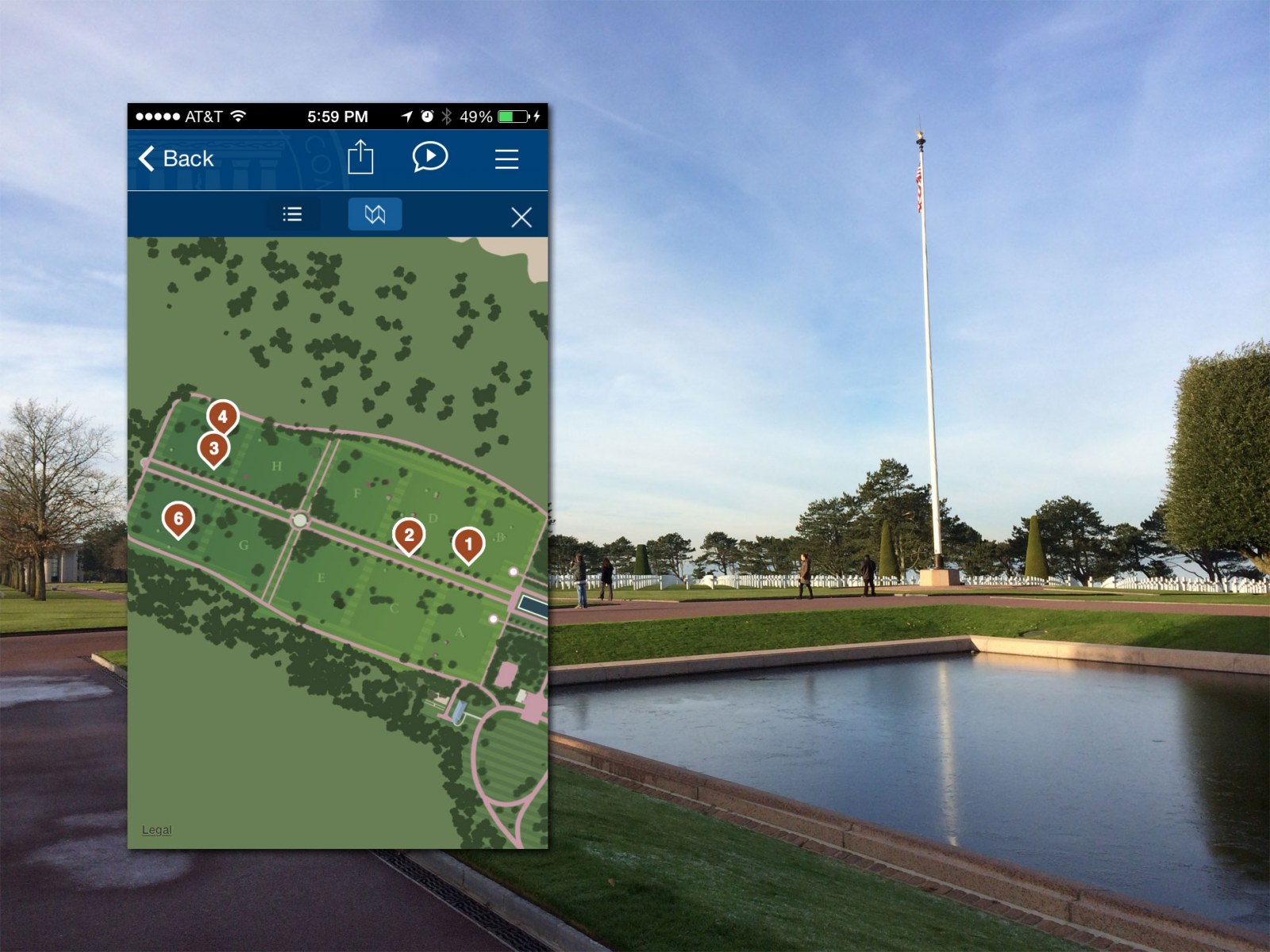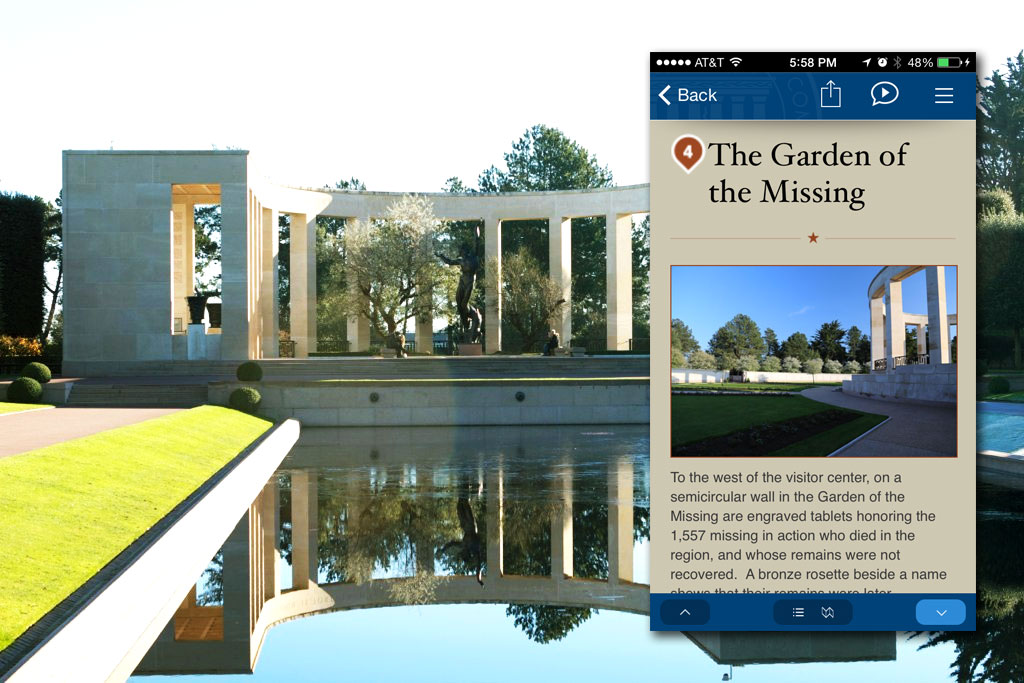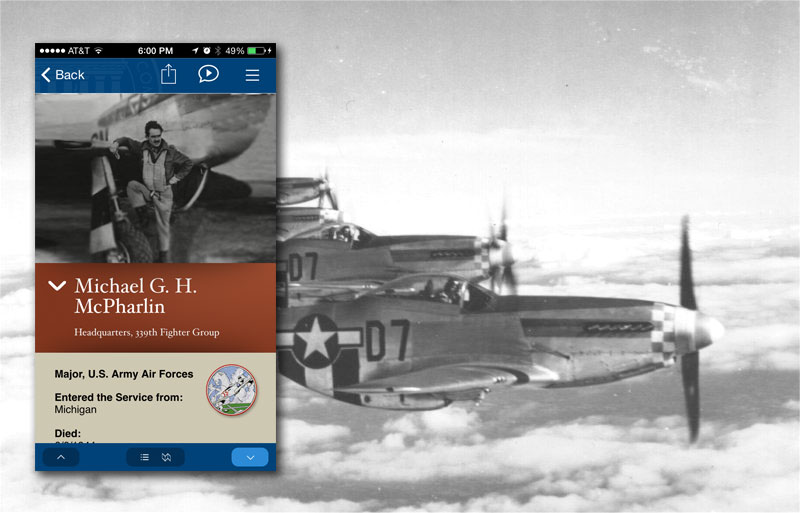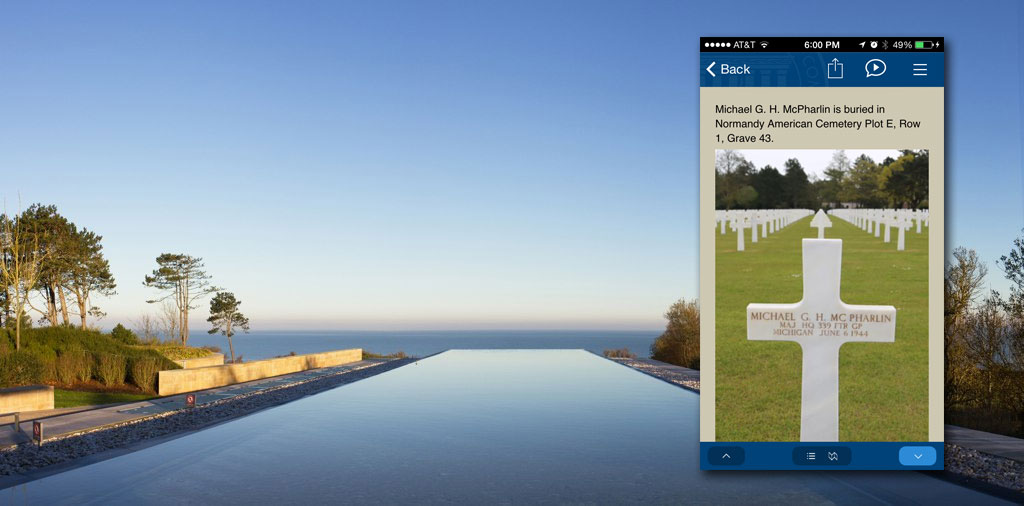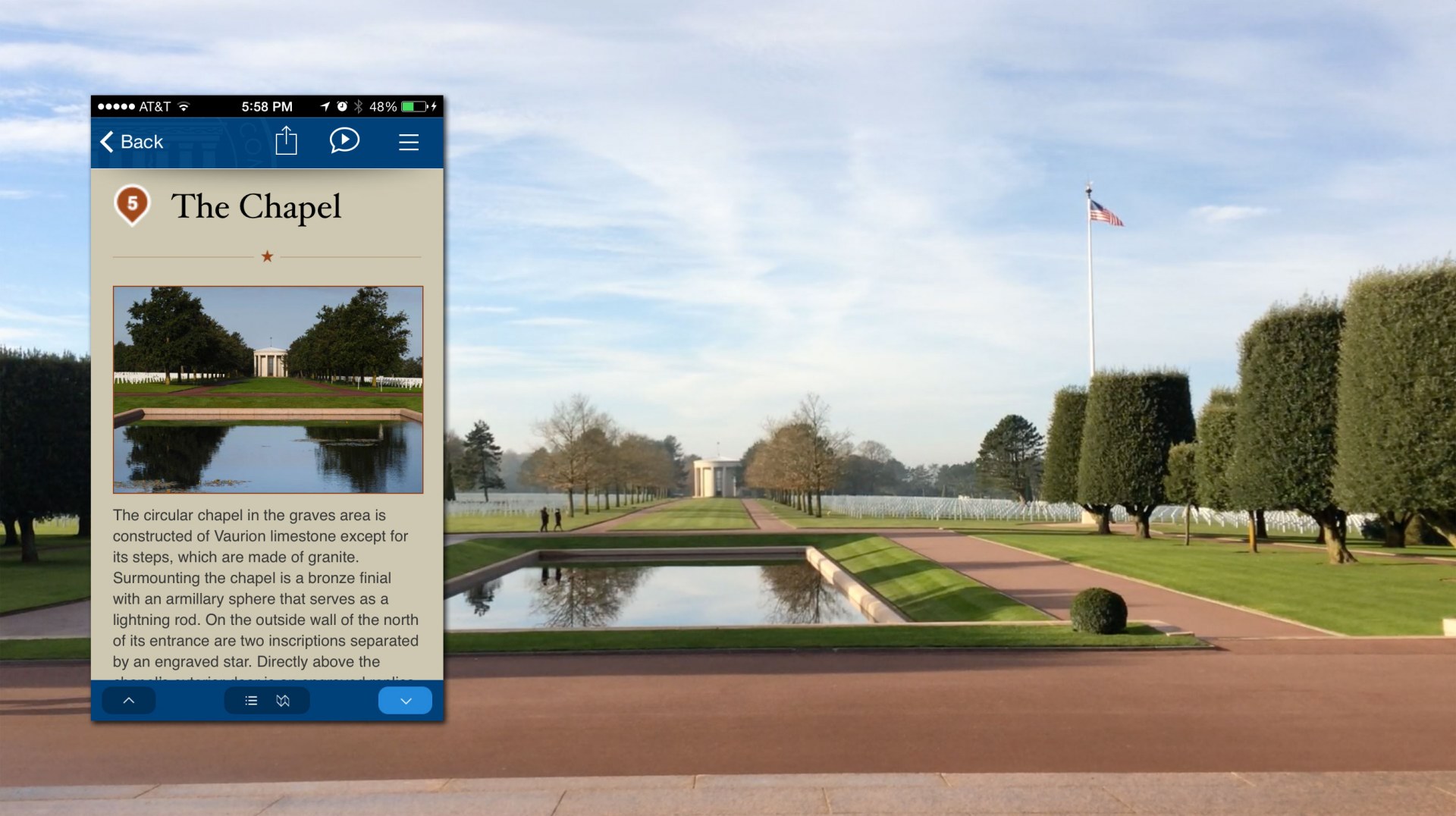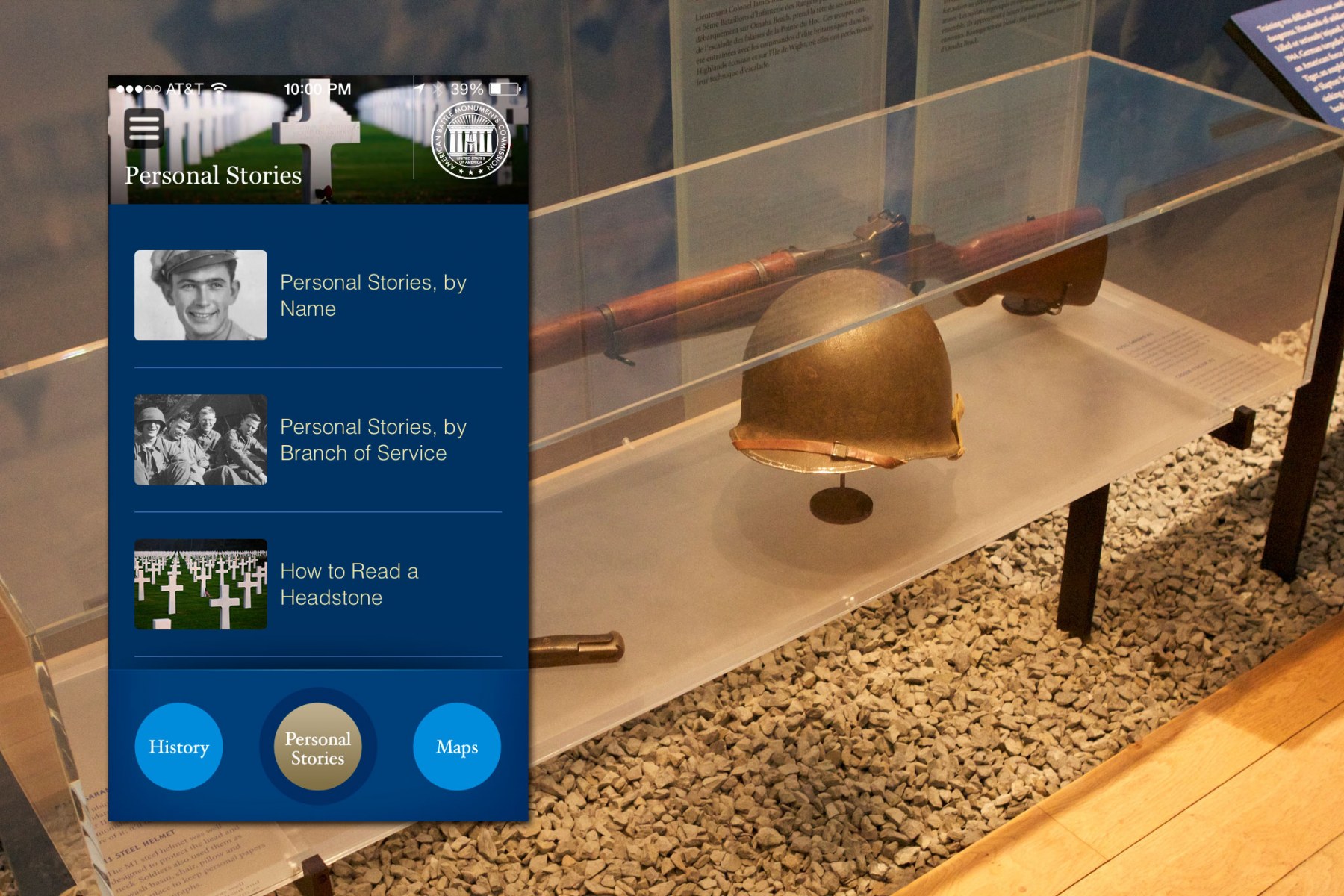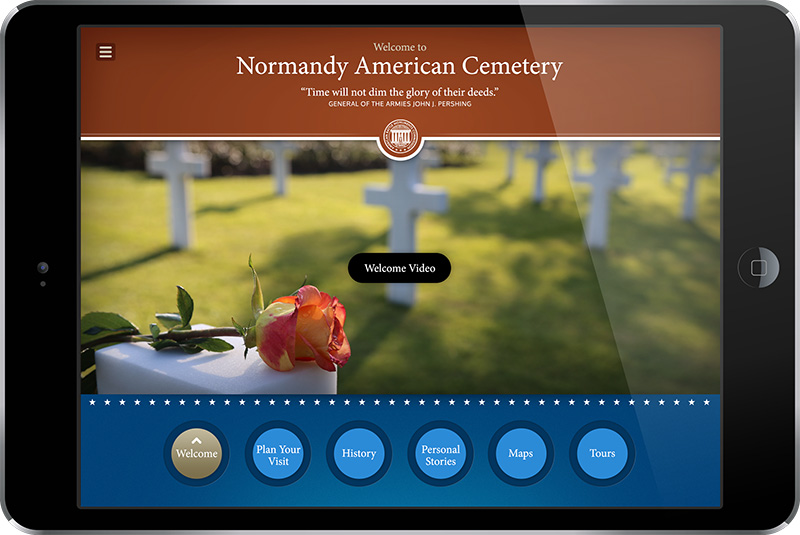In June 2013, Nomad was selected as the technology partner for a series of mobile apps and responsive websites representing America’s overseas military memorials and cemeteries. The American Battle Monuments Commission (ABMC) manages 24 World War I and World War II cemeteries around the world, including the Normandy American Cemetery.
ABMC is creating this series of apps and websites to help people better understand why Americans fought and died in these faraway places, and to get to know the personal stories of many who might otherwise appear to visitors as just another white cross or Star of David standing row upon row. The apps are designed to enhance anyone’s visit (whether in-person or virtual) by making it more meaningful and personal.
We were invited to partner with Dog Green Productions, a New York firm specializing in historical documentary film and multimedia production that has worked with ABMC for many years. Dog Green is focusing on the history and stories that will be told through the apps, while Nomad creates the user interface, design and application code and back-end content management system. We’ve been able to build on our work for national park and travel clients to develop a custom framework that ABMC can use to publish all of its apps.
After receiving the contract, the Dog Green/Nomad team kicked into high gear, traveling to England, France and Italy in August to scout the Cambridge, Meuse-Argonne and Sicily-Rome American cemeteries. In December 2013, we visited Normandy and Flanders.
Experiencing the cemeteries first-hand has been a tremendous help in the planning process. We weren’t prepared for the amazing diversity of the stories we encountered — both of the cemeteries themselves and the people buried and memorialized there.
For example, the story of the Cambridge American Cemetery doesn’t just recount the air war over Europe as you might guess — it’s actually about how all of England served as a giant staging base as the Allies prepared for D-Day. Only about 20% of the 3,812 burials there are combat deaths; the rest are truck drivers, dock workers, training accidents, nurses — all the sorts of people necessary to support the strategic bombing campaign and to build up a massive invasion force. It’s not the story of one great battle, but of two “cousins” joining forces to fight a common enemy.
Contrast Cambridge with the Meuse-Argonne American Cemetery in Northeastern France. Almost everyone buried or memorialized there died during the month-and-a-half-long Meuse-Argonne offensive of World War I, the largest land battle fought by the United States prior to World World II. Our sacrifices in the Meuse-Argonne helped the Allies force Germany to the negotiating table to bring an end to World War I. The cemetery itself is located at the scene of some of the bloodiest fighting. A landscape scarred by trenches, barbed wire, shattered trees and pools of gas is today a hallowed garden in the midst of rolling French countryside. The stories of camaraderie and individual courage that we can tell at the Meuse-Argonne bring humanity back to the inhuman horrors of war.
How do you tell these stories well? How do you put them in the palm of someone’s hand? How do you maintain the reverent tranquility of these places while also conveying a sense of the tumult, conflict and chaos of war?
To do these places justice, we created several new interactive tools and improved our existing functionality to ensure that Dog Green and ABMC could tell the stories in the way most appropriate for each cemetery and individual.
- An interactive grave database allows visitors to locate grave markers or names on the walls of the missing. The basic profiles are connected to in-depth personal stories where available.
- Flexible content pages can weave together text, images, video and other content.
- Historical theme content that links to individual stories and vice versa — you can either work your way through a battle or historical theme and then to an individual story, or begin with a personal story and weave your way into a bigger theme.
- Walking tours of the cemeteries can offer any combination of history and individual stories, allowing people to experience the cemetery in the way most relevant to them. Wayfinding is seamlessly incorporated between each tour stop.
- Driving tours provide a way for visitors to explore the surrounding area while visiting key historic sites, all within the broader narrative of the cemetery.
- Slide shows offer a simple way to tell stories with images and captions or narration.
- Offline maps are overlaid on the device’s built-in maps so that we can provide detail and context not available from Google or Apple. We’re able to provide our own map layers just over the areas where it’s needed, rather than having to cover the entire region with the same amount of detail.
- Interactive diagrams with timeline functionality enable us to show how a battle unfolded or how an area changed over the course of the war.
All of the content for the apps is managed in a relational content management system (CMS) developed by Nomad for the ABMC project.
